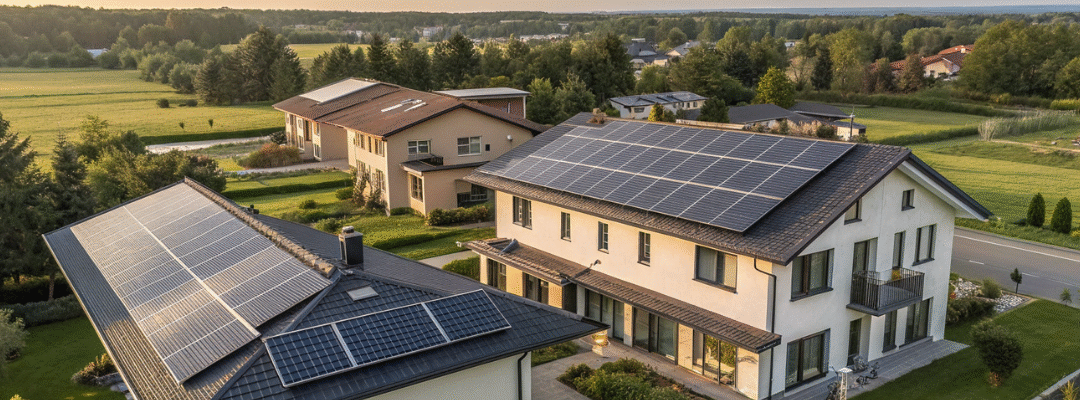Introduction: A Smarter Way for Housing Societies to Save
In most Indian housing societies, electricity bills are one of the biggest monthly expenses. From running lifts and water pumps to lighting common areas, the costs quickly add up — often forming 40–50% of the maintenance fees residents pay.
The good news? Rooftop solar power can cut these costs almost in half, making societies more sustainable and financially independent.
Why Housing Societies Spend So Much on Power
- Lifts & Elevators – constant usage in multi-storey buildings
- Water Pumps – to supply overhead tanks
- Common Area Lighting – corridors, parking, gardens, security cabins
- Clubhouses & Amenities – gyms, swimming pools, halls
For a mid-sized society of 100 flats, monthly common area electricity bills can range from ₹50,000 to ₹1,50,000.
How Rooftop Solar Helps Cut Costs
By installing a collective rooftop solar system, societies can:
- Generate free power during the day (when most usage is highest)
- Offset 40–50% of electricity costs within 3–5 years
- Use net metering to export surplus electricity and earn credits
- Lower monthly maintenance fees for every household
Example: Savings for a 100-Flat Society
- System Size: 50 kW
- Cost: ₹30–35 lakhs
- Subsidy (40% up to 10 kW + 20% for additional): ~₹8–10 lakhs
- Final Cost: ₹22–25 lakhs
- Monthly Bill Before Solar: ₹1,00,000
- Monthly Bill After Solar: ₹50,000–₹60,000
- Annual Savings: ₹5–6 lakhs
- Payback Period: ~4 years
- System Life: 25 years → ₹1.2+ crore savings over lifetime
Government Support & Subsidies
Under the Pradhan Mantri Surya Ghar Yojana and MNRE programs:
- Housing societies get capital subsidies for rooftop solar
- Easy net metering approval through DISCOMs
- Low-interest green loans available for RWAs and co-operatives
Note: Always use an MNRE-approved vendor to claim subsidies.
Extra Benefits for Societies
- Lower Maintenance Fees – residents pay less every month
- Higher Property Value – flats in “green” societies sell faster
- Eco-Friendly Branding – shows commitment to sustainability
- Resilience – battery-backed systems help during power cuts
- Community Impact – cleaner air, reduced carbon footprint
Each 1 kW of solar saves 1.2 tons of CO₂ per year — for a 50 kW society system, that’s 60 tons annually, equal to planting 2,500 trees!
Tips for Housing Societies
- Do an Energy Audit – check average monthly consumption
- Choose Tier-1 Panels & Branded Inverters – for durability
- Leverage Net Metering – to monetize extra power
- Sign AMC (Annual Maintenance Contracts) – ensures smooth operation
- Engage Residents Early – build support with clear cost-benefit sharing
Case Study: Bengaluru Housing Society
- Flats: 120
- System Size: 40 kW
- Savings: ₹4.5 lakhs per year
- Payback Period: 4.2 years
- Resident Feedback: Monthly maintenance dropped by ₹800 per flat
“Solar reduced our maintenance costs and gave us pride as a green community. Best decision we made as a society.” – RWA President

